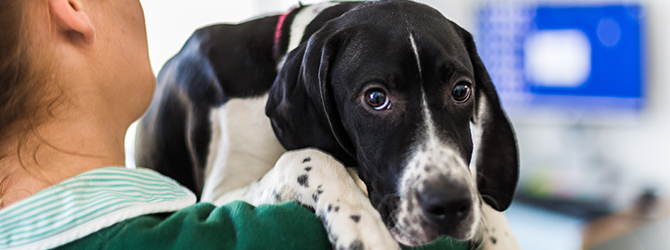Bladder infections in dogs: recognising dog cystitis and urinary tract infections
If you’ve ever had a bladder infection you’ll know just how horrible it can make you feel. Chances are you recognise the tell-tale signs and head straight to your doctor for medication that’ll clear the infection up fast.
Though bladder infections and urinary tract infections (UTIs) are just as common in dogs, your dog can’t tell you how he’s feeling. We’ll help you get clued up to the signs and symptoms of UTIs and bladder infections in dogs, so you can get help from your vet when your dog is suffering.
Is my dog likely to get a bladder infection?
Bladder infections (sometimes called cystitis, which means inflammation of the bladder) can be caused by crystals, bacteria, diseases such as diabetes, and even some antibiotics. All dogs can contract bladder infections, though they are more common in female dogs and those with a weakened immune system.
Identifying the signs of bladder infections and UTIs in dogs
Pain or difficulty urinating may be the first sign that your dog has a urinary tract or bladder infection. You may spot blood in his urine, or perhaps notice that he’s producing just a trickle. In some cases, your normally housetrained dog may wee inside your home. Always get your dog checked out by your vet if you notice any of the following symptoms:
Signs and symptoms of bladder infections in dogs
- Straining to urinate
- Frequent urination
- Blood in the urine
- Cloudy or strong-smelling urine
- Trickling urine
- Weeing on the carpet, or elsewhere inside your home
- Whimpering while urinating
- Licking the genital area
- Fever
- Excessive thirst
- Lethargy
Read more: How to collect a urine sample from your dog
Diagnosing cystitis, bladder infections and UTIs in dogs
Your vet may recommeend testing a sample of your dog’s urine to determine whether he has an infection. The causes of infection can include cystitis, urinary tract infections or stones, or bladder infections. Depending on the cause, he or she may prescribe anti-inflammatories and/or antibiotics to clear up the infection, or recommend a special diet to help dissolve the urinary tract stones.
“Pain or difficulty urinating may be the first sign that your dog has a urinary tract infection, bladder infection or cystitis.”
Can I prevent my dog from getting bladder infections?
The best way to protect your dog against bladder and urinary tract infections is to ensure he drinks plenty of water. Dogs like running water, so you may want to think about buying a water fountain, as it may encourage your dog to drink more.
Need advice on bladder infections in dogs?
For expert advice on bladder infections and cystitis in dogs, get in touch with your local vet.
Find your nearest vet using our Find a Vet page, or speak to a vet online using Online Vets.

